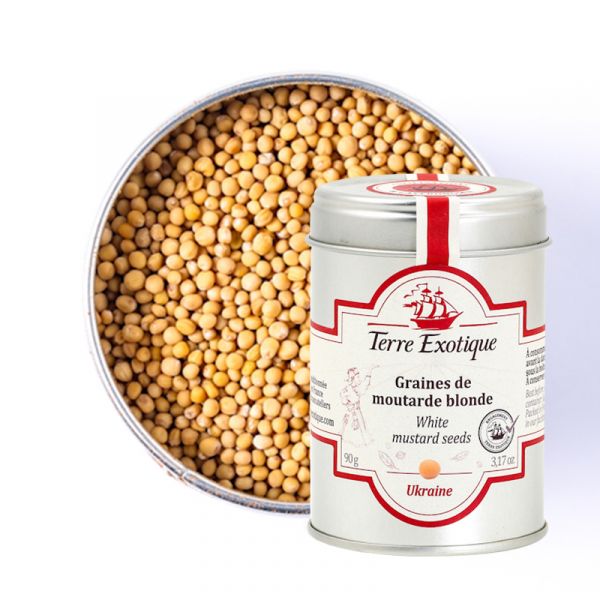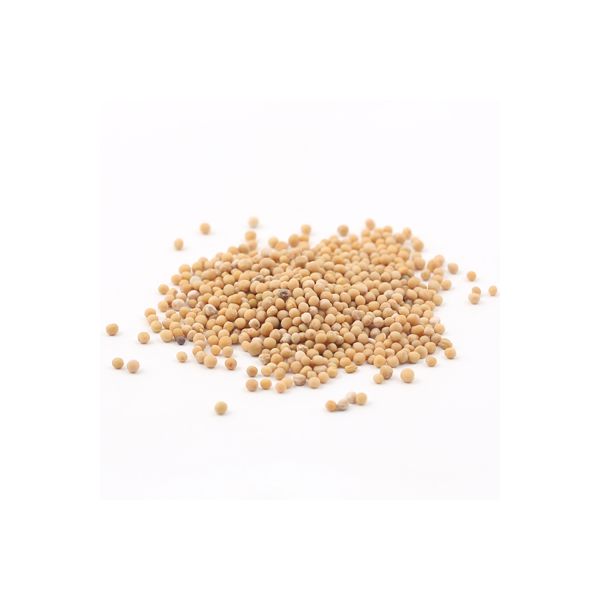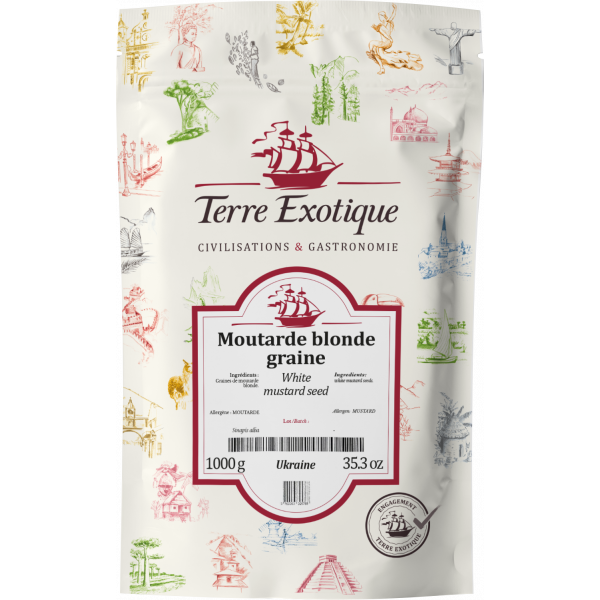





How to Cook with Blonde Mustard Seeds?
They can be used whole, ground, or as a paste to season a variety of dishes. In marinades, dressings, sauces, or stews, they add a spicy and aromatic note that enhances flavors.
Recipe Ideas for Using Blonde Mustard Seeds
- Honey Mustard Chicken: Marinate chicken fillets with honey, blonde mustard seeds, cider vinegar, and chopped garlic. Cook the fillets in a pan until they are golden and well cooked.
- Old-Fashioned Mustard Sauce: Toast blonde mustard seeds in a dry pan until they start to pop. Mix them with crème fraîche, Dijon mustard, white wine, and a bit of sugar. Simmer until thickened.
- Honey Mustard Vinaigrette: Mix olive oil, cider vinegar, honey, Dijon mustard, blonde mustard seeds, and a bit of salt and pepper. Use this vinaigrette to dress green or vegetable salads.
- Mustard-Crusted Fish: Coat fish fillets (such as salmon or trout) with a mixture of Dijon mustard, honey, blonde mustard seeds, and breadcrumbs. Bake until the fish is cooked and the crust is golden.
The Aromas of Blonde Mustard Seeds
Blonde mustard seeds, also known as yellow mustard, have a unique aromatic profile that makes them a valuable ingredient in cooking. They are characterized by their slightly spicy and subtly sweet taste, with earthy and spicy notes. When heated or ground, the seeds release volatile compounds that intensify their flavor, adding depth to dishes.
The Origin of Blonde Mustard
Blonde mustard, Brassica hirta, is a herbaceous plant in the Brassicaceae family. It is mainly cultivated in Europe and North America for its oil-rich seeds. The mustard seeds are harvested when the plant's pods reach maturity, then dried and sorted to ensure optimal quality.
The History of Mustum Ardens
Mustard seeds have been used for millennia in various cultures around the world. The ancient Egyptians used them for their medicinal properties, while the Romans prepared a spicy paste similar to modern mustard. The word "mustard" comes from the Latin "mustum ardens," meaning "burning must," referring to the mustard paste traditionally mixed with grape must.
| Allergen | Moutarde / Mustard |
|---|---|
| Native country | UE / NON UE |
| Genus and botanical species | Sinapis alba |
| Ingredients | white MUSTARD seed |
| Nutritional Info | VN Energie pour 100 g (energy for 100g) : 636 kJ / 152 kcal VN Matière grasse (fat) : 11.2 g Dont acide gras saturés (of which saturated fat) : 0.8 g VN Glucides (carbohydrate) : 4.3 g Dont sucres (of which sugars) : 1.7 g VN Protéines (protein) : 6.9 g Vn Sel (salt) : 6.3 g |
| TRACES EVENTUELLES D'ALLERGÈNES | céleri, sésame, moutarde, fruits à coques. |
 Français
Français 